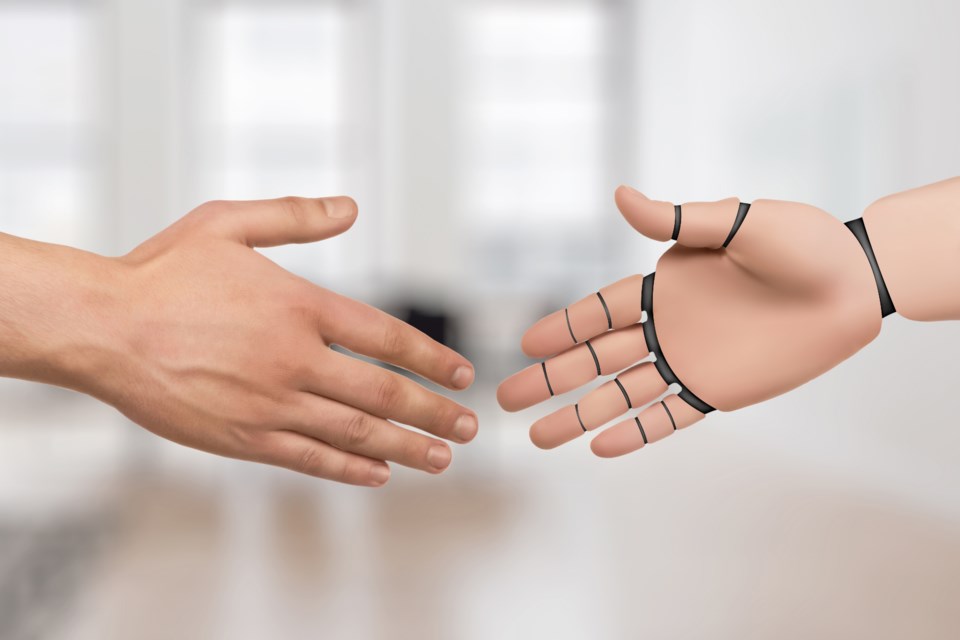Robots are one step closer — actually one finger closer — to living their mechanical lives in human skin.
Scientists from Japan have , according to new research published in the Matter journal. The project was conducted in an effort to boost robots’ likeability and improve their communication efficiency while interacting with humans in the health-care and service industries.
To do this, the robot’s three-joint electrical finger was submerged into a solution of collagen and human dermal fibroblasts, the key ingredients in human skin’s connective tissue. Compared to paint primer, this mixture moulded tightly to the robot finger’s mechanical insides, the study states.
Next, a layer of human epidermal keratinocytes, the cells in the outermost layer of human skin, were stuck to the existing coat to give the finger “skin-like texture and moisture-retaining barrier properties,” according to the study.
"The finger looks slightly 'sweaty' straight out of the culture medium,” Shoji Takeuchi, first author of the study and a professor at the University of Tokyo, said in a press release.
Once crafted, the skin was tested through dynamic movements. According to the study, the skin can withstand curling and stretching movements with sufficient amounts of strength and elasticity. Its outer layer is even lifelike enough to be lifted by tweezers and repel water.
Perhaps one of its most human-like characteristics is the skin’s ability to self-heal. If it’s damaged, researchers found that a collagen bandage can be applied to regrow where the injury took place. This method was inspired by the skin-grafting techniques that are often employed when a human’s skin is deeply burned, the study states.
Although this skin won’t survive as natural human skin does due to its lack of nutrients and waste disposal, Takeuchi said it’s an important first step in creating a robot that looks entirely "real."
“I think living skin is the ultimate solution to give robots the look and touch of living creatures since it is exactly the same material that covers animal bodies," Takeuchi said.
What's next? This research team plans to develop nails, sweat glands, hair follicles and sensory neurons in an effort to make robots as lifelike as possible.
To see a photo of the robot skin, visit the .


